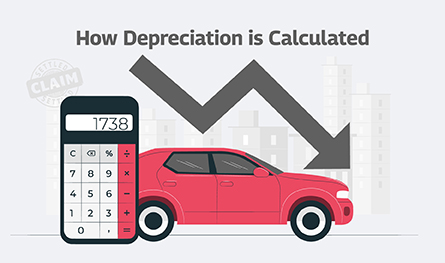10 Best Post Office Schemes 2025 – Eligibility, Interest rate, and Benefits

Post Office Savings Schemes are government-backed investments, which come with the assurance of the government for guaranteed returns. These schemes especially cater to the masses of the country scattered across rural India. These savings policies help save a corpus for their future as well as for emergency purposes. These plans not only help achieve goals but save taxes as well. Are you looking for information about the best Post Office Savings Schemes in 2025? If so, you can get complete details of the best saving plans offered by the Indian Post Office and their rate of interest and eligibility criteria in this blog.

- What is a Post Office Investment Savings Scheme?
- Benefits of Investing in Post Office Savings Scheme
- Types of post office savings schemes, India
- Post Office Savings Account
- National Savings Recurring Deposit Account
- National Savings Time Deposit Account
- National Savings Monthly Income Account
- Senior Citizens Savings Scheme Account
- Public Provident Fund Account
- Sukanya Samriddhi Account
- National Savings Certificates
- Kisan Vikas Patra
- Mahila Samman Savings Certificate
- Best 10 Post Office Scheme and Interest Rates for 2025
- How to Apply for a Post Office Savings Scheme?
- Documents Required to Buy Post Office Savings Scheme
A large population in our country lives in rural areas where financial planning isn’t really a priority. To encourage this section of society (the economically weak and downtrodden) to save a little for the future, the Indian Post Office has come up with a number of financial schemes.
Here we look at some of these best post office schemes based on the interest rate and eligibility criteria to apply for each, to help you make an informed choice for investment in the best saving plan.
In fact, some of these plans are also designed specifically for women, children, and the elderly, to help them plan a better future for themselves and be able to meet their financial goals.
Let’s take a look at some of these Indian post office tax savings schemes.
What is a Post Office Investment Savings Scheme?
The post office savings plan includes investment instruments that provide a variety of reliable and risk-free returns. There are numerous ways to open a savings account at a post office in India. These provide appealing fixed interest rates and fixed deposit policies that are set or recurring.
Benefits of Investing in Post Office Savings Scheme
Below are some benefits of investing in Post Office Savings Schemes:
- Easy process of enrolment – It requires very limited documentation to invest in a post office saving scheme. The easy procedure involved in availing these schemes makes them easy to invest in.
- Investment friendly – It suits investors from both urban as well as rural India. And the reason behind it is the ease of enrolment and simple-to-invest schemes. Anyone looking for a risk-free investment portfolio can invest in these schemes.
- Long-term investments – Post Office schemes are long-term policies like retirement policies and they allow investors the opportunity to save for the long term. Hence, they suit well for pension and other long-term goals.
- Investors can choose from a bucket of products – The Schemes are available in a wide range depending on the various types of individuals. The government offers some beneficial small savings schemes through post offices to allow common people the opportunity to invest in them as per their requirements.
- Good interest rate – An investor under the Post Office Saving Scheme can get an interest rate ranging from 4 to 9% depending on the scheme. These schemes are risk-free and they come under the undertaking of the government of India.
- Tax exemption – Tax rebate is also available under most of the schemes u/s 80C of the Income Tax Act 1961 on the invested amount. There are some schemes which also offer tax exemption on the interest earned.
10 Post Office Savings Schemes and Interest Rates
1. Post Office Savings Account (SB)
Post Office Savings Scheme Account Interest Rates, Tenure, and Tax Benefits 2025
| Type of Account | Single, Joint (up to 2 adults allowed), minor (joint account with a parent/guardian), join account with a mentally unsound person, and independent minor account over 10 years of age |
| Opening Procedure | Download the application form from the official website of the Department of Posts or collect one from a post office near you. In case of silent/inactive account for 3 years, fresh application needed |
| Nomination | Mandatory |
| Rate of Interest | 4% p.a. |
| Investment | Minimum – Rs. 500; Maximum – no limit. Minimum balance needed per month to maintain the account – Rs. 10 |
| Withdrawal | Full withdrawal possible (over Rs. 50) at a post office near you; however minimum Rs. 500 balance needed in the account for maintenance; zero-balance accounts are liable for Rs. 100 fine or permanent closure in case minimum balance not maintained for 3 years |
| Tax Exemption | Upto Rs. 10,000 lakh annual exemption allowed to investors on the interest earned under Section 80TTA of the ITA |
| Risk Involved | None |
2. National Savings Recurring Deposit Account (RD)
Post Office Recurring Deposit (RD) Interest Rates, Tenure, and Tax Benefits 2025
| Type of Account | Single, Joint (up to 3 adults allowed), minor (joint account with a parent/guardian) and independent minor a/c over 10 years old |
| Opening Procedure | The applicant needs to open a National Savings Recurring Deposit Account at the Post Office by filling out a Purchasing Certificate Form |
| Rate of Interest | 6.7% p.a. on both single and joint a/c payable upon maturity |
| Tenure | 5 years |
| Investment | Minimum – Rs. 100; Maximum – no limit |
| Type of Investment | Monthly |
| Mode of Investment | Cash/cheque/net banking |
| Premature Withdrawal | After 3 years of opening of the a/c |
| Tax Exemption | Upto Rs. 1.5 lakh annual exemption allowed to investors under Section 80C of the ITA; interest not tax-exempted |
3. National Savings Time Deposit Account (TD)
National Savings Time Deposit Account Interest Rates, Tenure, and Tax Benefits 2025
| Eligibility | Single adult, Joint (up to 3 adults allowed), minor (guardian can open on behalf of minor), and independent minor a/c over 10 years old |
| Maturity | 1-year, 2-year, 3-year, 5-year |
| Rate of Interest | Starts at 6.9% (Max. 7.5%) |
| Investment Amount | Min. Rs 1000 and multiples of 100.
No Max. amount |
| Premature withdrawal | Minimum six months from the date of deposit |
| Tax Exemption | Investments made in five-year accounts qualify for tax deductions under Section 80C of the Income Tax |
| Risk Involved | Risk -free |
4. National Savings Monthly Income Account (MIS)
National Savings Monthly Income Account Interest Rates, Tenure, and Tax Benefits 2025
| Eligibility | Single adult, Joint (up to 3 adults allowed), minor (guardian can open on behalf of minor), and independent minor a/c over 10 years old |
| Maturity | 5 years |
| Rate of Interest | 7.4% |
| Investment Amount | Min. Rs 1000 and multiples of 1000
Max. Rs. 9 lakhs (single account), Rs. 15 lakhs (joint account) |
| Premature withdrawal | Minimum 1 year from the date of deposit |
| Tax Exemption | Interest earned is taxable
No deduction is available under Sec 80C for deposits made |
| Risk Involved | low -risk |
5. Senior Citizens Savings Scheme Account (SCSS)
The scheme is specially run for the elderly in the country to help them lead a comfortable life post retirement. The senior citizens are allowed to earn interest on the lump sum investment every quarter. The scheme has government support and therefore the risk involved is negligible.
Senior Citizen Savings Scheme Interest Rates, Tenure, and Tax Benefits 2025
| Type of Account | Single for people over 60 years old, retirees, or people 55-60 years old currently employed in a job; joint account permissible with only spouse |
| Maturity | 5 years |
| Rate of Interest | 8.2% p.a. paid every quarter on 31 March, 30 June, 30 September, and 31 December; interest auto-credit facility available to the investor’s account |
| Investment | Minimum – Rs. 1,000; Maximum – upto Rs. 15 lakh allowed |
| Account Closing | Closure allowed after 5 years of opening of the account; no interest payable if closure before 1 year since the date of opening, 1.5% deduction from principal amount for account closure between 1 and 2 years, 1% deduction between 2 and 5 years |
| Tax Exemption | Tax deductions permissible for interest below Rs. 50,000 per annum under Section 80C of the ITA, 1961 |
| Nominee Claim | Permissible in case of death of the depositor before the scheme maturity; if joint account with spouse, account can continue upto maturity |
6. Public Provident Fund Account (PPF)
Public Provident Fund (PPF) Account Interest Rates, Tenure, and Tax Benefits 2025
| Eligibility | Single adult (resident Indian), a guardian can open on behalf of a minor or a mentally unsound person |
| Maturity | 15 years |
| Rate of Interest | 7.1% |
| Investment Amount | Min. Rs 500.
Max. Rs. 1.5 lakh per year |
| Premature withdrawal | Any time after the expiry of five years of the account |
| Tax Exemption | Tax exemption of up to Rs. 1.5 lakh in a FY u/s 80C of the Income Tax |
| Risk Involved | low -risk |
7. Sukanya Samriddhi Account (SSA)
Considered the best policy for girl child, the Sukanya Samriddhi Account or SSA is backed with government support particularly for girl child in India. This post office tax saving scheme for girl child is specifically designed by the government to support the educational, marriage and other future financial expenses of girls in India.
Note that there is also a post office scheme for boy child. Among the many options, the Ponmagan Podhuvaippu Nidhi Scheme is popular; however, it is only available currently in the post office branches of Tamil Nadu and Pondicherry.
Sukanya Samriddhi Yojna Interest Rates, Tenure, and Tax Benefits 2025
| Type of Account | Single, opened by a guardian in the name of a girl child below 10 years old or for maximum 2 girl children in a family; two accounts can be opened in case of twins or triplets |
| Maturity | 15 years |
| Rate of Interest | 8% p.a.; determined by the Ministry of Finance every quarter |
| Investment | Minimum – Rs. 250; Maximum – upto Rs. 1.5 lakh per annum; can be invested in several installments or as a lump sum |
| Withdrawal | Amount can be withrawn only partially when the girl child is 18 years old; up to 50% of the balance |
| Tax Exemption | Tax deductions permissible for interest below Rs. 1.5 lakh per annum under Section 80C of the ITA, 1961 |
| Risk Involved | None |
8. National Savings Certificates (NSC)
This is another very popular scheme that is designed to offer income tax benefits to both salaried professionals and businessmen. The main feature of NSC is that it has no maximum investment limit. Check out the other features below:
National Savings Certificates (NSC) (VIIIth Issue) Interest Rates, Tenure, and Tax Benefits 2025
| Eligibility | Single adult, Joint account (up to 3 persons) a guardian can open on behalf of a minor or a mentally unsound person, independent minor account over 10 years of age |
| Maturity | 5 years |
| Rate of Interest | 7.75% |
| Investment Amount | Min. Rs 1000 and multiples of 100
No Max. limit |
| Premature withdrawal | Not before five years (on certain conditions) |
| Tax Exemption | Tax exemption of up to Rs. 1.5 lakh in a FY u/s 80C of the Income Tax |
| Risk Involved | low -risk |
9. Kisan Vikas Patra(KVP)
KVP is a risk-free and fixed-rate small savings plan that allows the investor to save and accumulate wealth over time without any worry. Here are some features:
Kisan Vikas Patra (KVP) Interest Rates, Tenure, and Tax Benefits 2025
| Eligibility | Single adult, Joint account (up to 3 persons) a guardian can open on behalf of a minor or a mentally unsound person, independent minor account over 10 years of age |
| Maturity | 9 years and 7 months (Maturity period is decided by the Ministry of Finance from time to time) |
| Rate of Interest | 7.5% |
| Investment Amount | Min. Rs 1000 and multiples of 100
No Max. limit |
| Premature withdrawal | Can be closed under certain conditions |
| Tax Exemption | KVP is taxable upon maturity. There is no tax benefit under this scheme. |
| Risk Involved | low -risk |
10. Mahila Samman Savings Certificate
Mahila Samman Savings Certificate Interest Rates, Tenure, and Tax Benefits 2025
| Eligibility | By a woman for herself, by a guardian on behalf of a minor girl |
| Maturity | Two years from the date of opening the account |
| Rate of Interest | 7.5% |
| Investment Amount | Min. Rs 1000 and multiples of 100
Max. limit is Rs. 2 lakhs |
| Premature withdrawal | On the death of the account holder
On extreme cases |
| Tax Exemption | No tax benefit under this scheme |
| Risk Involved | Risk-free |
Best Post Office Scheme and Interest Rates for 2025
Checkout the below table, representing the 10 best Post Office Saving Schemes and their respective Interest Rates 2025:
| Sr. No. | Post Office Savings Schemes | Interest Rates Annually |
| 1 | Post Office Savings Account | 4% |
| 2 | National Savings Recurring Deposit Account | 6.7% |
| 3 | National Savings Time Deposit Account | Starts at 6.9% (Max. 7.5%) |
| 4 | National Savings Monthly Income Account | 7.4% |
| 5 | Senior Citizens Savings Scheme Account | 8.2% |
| 6 | Public Provident Fund Account | 7.1% |
| 7 | Sukanya Samriddhi Account | 8% |
| 8 | National Savings Certificates (VIIIth Issue) | 7.75% |
| 9 | Kisan Vikas Patra | 7.5% |
| 10 | Mahila Samman Savings Certificate | 7.5% |
How to Apply for a Post Office Savings Scheme?
Below are the easy steps to apply for post office savings schemes:
Offline by Visiting Branch
- First you need to visit the nearest post office branch
- Ask for the form of the particular scheme that you want to invest in. Alternatively, you can download the form from the Indian Post website
- Now, fill in the details required in the form correctly and submit the same along with your KYC details and photographs, etc.
- Once done, complete the process of enrolment by depositing the amount as per the requirement of the chosen plan.
Through Internet Banking
- Go to the official portal of the Department of Posts (DOP)
- Click on ‘New User Activation’
- Here, you have to enter your ‘Account ID’ and your ’Customer ID’ to proceed ahead by clicking on the ‘Continue’ button. If your Internet banking is not activated, you must activate it by filling out an activation form
- Once online banking is active, submit the ID and password to log in
- Click on the button of the ‘General Service’ and proceed by clicking on the ‘Service Request’ button
- Now, click on the ‘New Requests’ button under the ‘Service Request’ section
- Choose the type of scheme you want to invest in from the options available
- Submit the required details on the scheme application form. Now, click on the ‘Submit’ button to join the scheme
Through Mobile App
- First, you need to download the India Post Mobile Banking app from the Google Play Store and log in to it
- Once you log in successfully, go to the home page and select the ‘Requests’ button to open a post office savings account
- Submit essential details like deposit amount, term of scheme, nominee, etc. to open the account
Documents Required for Post Office Savings Scheme
Below are the required documents needed to open a post-office savings scheme in India:
- Application Form (plan specific)
- KYC Form
- PAN
- Aadhaar
- Driving license
- Voter’s ID card
- Job card
- Proof of DOB or date of birth
Best Post Office Investment-Savings Scheme 2025 and Interest Rates

Author Bio
Paybima Team
Paybima is an Indian insurance aggregator on a mission to make insurance simple for people. Paybima is the Digital arm of the already established and trusted Mahindra Insurance Brokers Ltd., a reputed name in the insurance broking industry with 17 years of experience. Paybima promises you the easy-to-access online platform to buy insurance policies, and also extend their unrelented assistance with all your policy related queries and services.
Other Life Insurance Products
Latest Post
So, you’ve crossed the fabulous 60 mark. Retirement may be on the cards, your kids might be off doing their own thing, and suddenly your knees are making more noise than your WhatsApp notifications. Welcome to the senior citizen club.
Now let’s talk about something most of us tend to postpone until a doctor gives us a reality check: health insurance. If you are wondering whether buying health insurance after 60 makes sense, the answer is a loud and clear yes. This article will cover everything you need to know about it, how it makes sense, how it differs from health insurance for young adults, and what you need to look out for when checking for medical insurance above the age of 60.

.png)
April 2 is observed as World Autism Awareness Day and there is no better way to observe the day than to raise awareness of this condition and to promote kindness towards autistic people. Read on to know more.


Car depreciation implies the difference between the cost of a car at the time of buying the car and when you sell it. A car insurance claim amount is determined by the car depreciation rate. The car depreciation rate is the reduction in the value of your car over its lifespan caused by wear and tear.


Fixed Deposits (FDs) are one of the safest ways to grow your savings. HDFC Bank offers attractive FD interest rates, allowing you to earn guaranteed returns on your investment. But before you invest, it's important to know how much interest you will earn and what your final maturity amount will be.


If you think of life insurance, chances are you are picturing something people buy in their 30s or 40s. But what if you are 65 or older and just getting started? The good news is that you are never too late. Whether you are thinking of easing the financial burden on your family, covering final expenses, or simply leaving behind a legacy, there are life insurance options tailored just for you.
This article will be a guide to life insurance for senior citizens above 65 years, explaining why it is important, the type of insurance options, and how to get the right policy for you.




